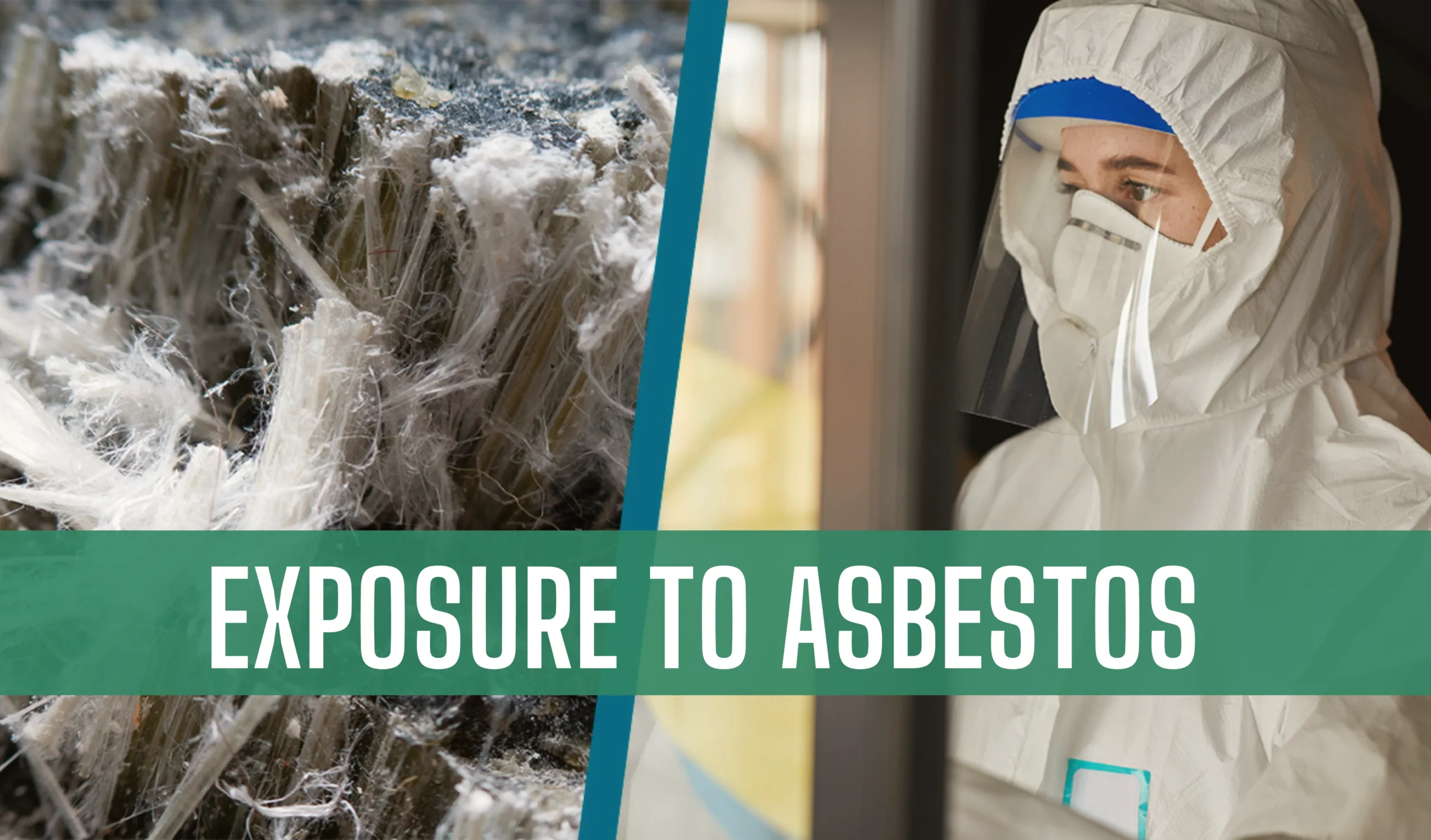Direct contact with contractors?
Asbestos is a group of naturally occurring fibrous minerals known for their heat resistance, strength, and insulating properties. These minerals are thin, fibrous crystals that can be woven into materials or used to reinforce products.
Asbestos has been widely used in various industries, particularly in construction, automotive, and shipbuilding, due to its durability and ability to resist fire, heat, and corrosion. However, despite its useful properties, asbestos poses significant health risks when its fibers are inhaled or ingested, leading to severe diseases like mesothelioma and asbestosis.
What is Asbestos Poisoning?
Asbestos poisoning, often referred to as asbestosis or asbestos-related disease, occurs when individuals inhale or ingest asbestos fibers, leading to serious health issues over time. Asbestos is a naturally occurring mineral widely used in various industries due to its heat resistance and durability. Once inhaled, these tiny fibers can become trapped in the lungs, causing inflammation, scarring, and impaired lung function.
Symptoms of asbestos poisoning may include shortness of breath, persistent cough, chest pain, and fatigue, often developing decades after the initial exposure. Long-term exposure can also lead to more severe conditions, such as lung cancer and mesothelioma, a rare cancer primarily affecting the lining of the lungs and chest cavity.
Unfortunately, there is no cure for asbestos poisoning, and the best approach is prevention through strict regulations and protective measures for workers in industries that still handle asbestos materials.
Types of Asbestos
According to the Congressional Asbestos Hazard Emergency Response Act of 1986, there are six primary types of asbestos. However, several other forms exist, commonly referred to as asbestiform minerals. These minerals share similar properties with asbestos and pose comparable health risks.
1: Chrysotile Asbestos
Chrysotile asbestos, often called white asbestos, is the most prevalent type, making up about 90% of asbestos used worldwide. Its fine, flexible fibers were commonly used in construction materials, insulation, and automotive parts. Despite its widespread use, chrysotile poses serious health risks when inhaled.
2: Amosite Asbestos
Amosite asbestos, also known as brown asbestos, is primarily found in Africa and is recognized for its harsh, needle-like fibers. It was commonly used in cement sheets, pipe insulation, and thermal insulation products due to its heat-resistant properties. However, the amosite is highly dangerous, with its sharp fibers easily inhaled, posing serious health risks such as lung disease.
3: Crocidolite Asbestos
Crocidolite asbestos, known as blue asbestos, is one of the most hazardous forms of asbestos. Its fine, brittle fibers are highly resistant to heat and chemicals, making it useful in insulation and fireproofing materials, but its inhalation can lead to severe health issues.
4: Tremolite Asbestos
Tremolite asbestos is a less common type of asbestos in metamorphic rocks. Its fibers are extremely harmful when inhaled, contributing to serious health issues like lung cancer and asbestosis.
5: Actinolite Asbestos
Actinolite asbestos is a rare form of asbestos that is typically found in metamorphic rocks. Its fibers are green to dark green and sharp and brittle. Although not commonly used in industrial applications, actinolite can still pose significant health risks when inhaling its fibers. Exposure can lead to serious respiratory issues, including asbestosis, lung cancer, and mesothelioma. Safety measures are crucial when handling materials containing actinolite asbestos.
6: Anthophyllite Asbestos
Anthophyllite asbestos is a less common type of asbestos, characterized by its brown to gray fibers. It primarily occurs in metamorphic rocks and has been used in some insulation materials. While not as widely used as other forms, it poses serious health risks, including lung disease, when inhaled.
How Was Asbestos Used?
Asbestos was widely used in various industries due to its unique properties, including heat resistance, durability, and insulating capabilities. It was commonly found in construction materials such as insulation, roofing shingles, and floor tiles, making it a popular choice for residential and commercial buildings.
Additionally, asbestos was used in automotive parts, particularly in brake linings and clutch pads, where its heat-resistant qualities were essential for safety and performance. The textile industry also utilized asbestos to make fireproof clothing and protective gear. However, the health risks associated with asbestos exposure, including lung diseases and cancers, led to a significant decline in its use and stricter regulations governing its handling and removal.
Discontinued Asbestos Building Materials:
Consumer asbestos products, which are no longer manufactured, once included items like toasters, ovens, ironing pads, and hair dryers. People were also exposed to asbestos-contaminated talc found in cosmetics and toys.
The materials associated with asbestos exposure include:
- Vinyl asbestos floor tiles
- Asbestos cement
- Asbestos roofing felt
- Asbestos adhesives, sealants, and coatings
- Asbestos-reinforced plastics
The Environmental Protection Agency (EPA) has the authority to review the potential risks of these materials before they can be marketed.
Asbestos Suppliers and Manufacturers
Asbestos suppliers and manufacturers play a crucial role in various industries due to the material’s unique properties, such as heat resistance, durability, and sound absorption. Historically, asbestos was widely used in construction materials, insulation, and automotive products. However, due to health risks associated with asbestos exposure, including lung cancer and asbestosis, many countries have imposed strict regulations on its use.
Consequently, suppliers and manufacturers have adapted by offering alternatives that maintain safety and performance standards. Today, companies in this sector focus on adhering to safety regulations, providing transparent information about the risks associated with asbestos, and exploring sustainable, non-toxic alternatives to meet industry demands while prioritizing health and environmental safety.
Asbestos-Related Diseases:

Asbestos-related diseases are a group of conditions caused by exposure to asbestos fibers, which can become lodged in the lungs and other tissues. These diseases often develop after prolonged asbestos exposure, typically in construction, shipbuilding, and manufacturing industries.
The most common asbestos-related diseases include asbestosis, lung cancer, and mesothelioma, a rare but aggressive cancer that affects the lining of the lungs, abdomen, or heart. Symptoms of these diseases may take decades to appear, making early detection difficult.
Unfortunately, there is no cure for many asbestos-related conditions, and treatment mainly focuses on managing symptoms and improving quality of life. Preventing exposure to asbestos remains the most effective way to reduce the risk of these serious health issues.
Asbestos Laws & Regulations:
Asbestos laws and regulations are designed to minimize exposure to asbestos fibers and protect public health. In many countries, strict rules govern using, handling, removing, and disposing of asbestos-containing materials. For instance, in the United States, the Environmental Protection Agency (EPA) and the Occupational Safety and Health Administration (OSHA) have established guidelines to limit asbestos exposure in workplaces and public buildings.
These regulations require employers to conduct regular inspections, provide protective equipment, and ensure proper asbestos removal procedures. In many regions, the use of asbestos in new products is either banned or heavily restricted due to its carcinogenic properties. Compliance with these laws is crucial in preventing asbestos-related diseases and ensuring public safety.
Uses of Asbestos:
- Construction and Building Materials:
- Insulation for pipes, boilers, and ducts.
- Fire-resistant roofing and siding materials.
- Ceiling and floor tiles for heat resistance.
- Cement sheets, boards, and pipes for structural strength.
- Acoustic insulation in walls and ceilings.
- Automotive Industry:
- Brake pads and linings for friction resistance.
- Clutches for durability under high temperatures.
- Gaskets and seals for mechanical parts.
- Shipbuilding and Marine Applications:
- Insulation for engine rooms and pipes.
- Fireproofing materials in ship decks and bulkheads.
- Textile Industry:
- Fire-resistant clothing for workers in high-heat environments.
- Heat-resistant fabrics and blankets.
- Electronics and Electrical Applications:
- Insulation for electrical wiring.
- Fireproof coatings for electrical panels.
- Household Products:
- Fire-resistant ironing boards and oven gloves.
- Asbestos-containing adhesives and sealants.
- Industrial and Chemical Plants:
- Insulation for boilers, furnaces, and reactors.
- Gaskets and packing materials for chemical processes.

Exposure to Asbestos:
- Occupational Exposure:
- Construction workers dealing with asbestos-containing materials (ACMs).
- Shipyard workers exposed to asbestos insulation and fireproofing.
- Automotive workers handling brake linings and clutches.
- Industrial workers in chemical plants and refineries.
- Environmental Exposure:
- Living near asbestos mines or asbestos-processing facilities.
- Proximity to demolished buildings containing asbestos.
- Presence of asbestos in soil and natural deposits.
- Secondary Exposure:
- Family members exposed through asbestos dust brought home on work clothing.
- Cleaning contaminated work uniforms or tools.
- Accidental Exposure:
- Renovation or demolition of old buildings containing asbestos.
- Disturbing asbestos-containing insulation, tiles, or siding.
- Health Risks from Asbestos Exposure:
- Asbestosis: Chronic lung disease caused by inhaling asbestos fibers.
- Mesothelioma: Aggressive cancer affecting the lining of the lungs, abdomen, or heart.
- Lung Cancer: Increased risk for smokers exposed to asbestos.
- Pleural Plaques: Thickening of the lung lining due to asbestos fiber accumulation.

Is Asbestos Banned?
Asbestos is not universally banned, though many countries have implemented partial or complete bans due to its known health risks, particularly its link to lung diseases and cancer. Asbestos has been fully banned in countries like Australia, the United Kingdom, and much of Europe. However, in some regions, including the United States, asbestos is not entirely prohibited but is heavily regulated.
The U.S. Environmental Protection Agency (EPA) restricts the use of asbestos in certain products and requires strict handling and removal procedures. Countries like China, India, and Russia continue to use asbestos in various industries, especially in construction. The global stance on asbestos varies, but there is a growing international consensus on its dangers and the push for safer alternatives.
Conclusion:
Asbestos, once hailed as a “miracle mineral” for its heat-resistant and durable properties, is now recognized as a major public health hazard. Its use has drastically declined due to the clear and significant risks it poses to human health. Understanding asbestos and the precautions needed when handling or being around it is crucial in preventing life-threatening diseases. Regulatory agencies worldwide continue to monitor and manage asbestos use to protect public health, and awareness about the dangers of asbestos is essential for ensuring safe environments.
FAQ:
What is asbestos?
Asbestos is a natural mineral made of tiny fibers. It was often used in construction materials because it's strong and can withstand heat.
Where can I find asbestos?
Asbestos is found in older buildings, especially homes and schools built before the 1980s. It might be in things like insulation, roofing, and flooring.
Why is asbestos harmful?
Asbestos fibers can become airborne if disturbed. Breathing them in can cause serious health problems, like lung disease and cancer.
How can I know if my home has asbestos?
If your home is older, it might have asbestos. The safest way to find out is to hire a professional to check and test any suspicious materials.
What should I do if I discover asbestos?
Please don't touch it. Contact a licensed expert who knows how to remove asbestos if needed safely.
Request a Free Quote
Connect us for More Info
Email: info@aiohomeservices.com
Phone Number: +1 714-600-1480
Address : 2011 Hout Rd, Mansfield, OH 44905, United States

Dr. William Pitman is a leading researcher and one of the foremost experts in asbestos testing and removal. With decades of experience in environmental science and public health, Dr. Pitman has dedicated his career to ensuring safe and effective asbestos abatement practices. His groundbreaking research has set industry standards for asbestos testing methodologies, helping to protect countless individuals from hazardous exposure. A sought-after consultant and speaker, Dr. Pitman combines scientific precision with practical expertise, making him a trusted authority in his field.
